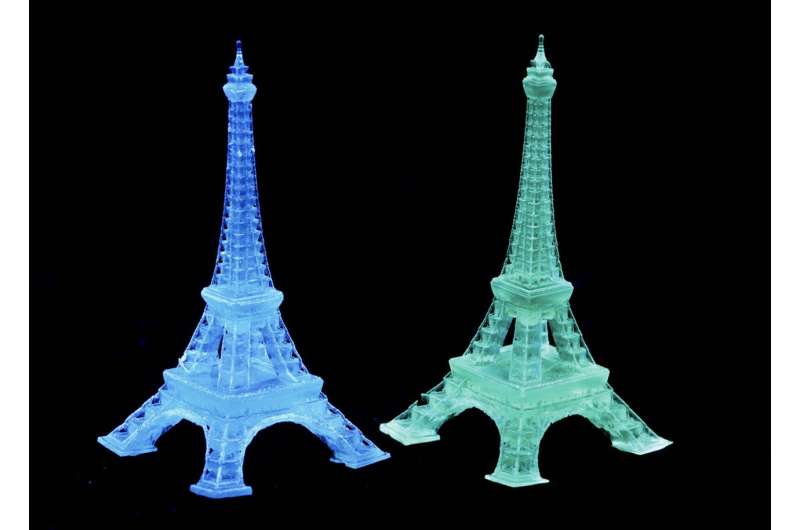Scientists advance affordable, sustainable solution for flat-panel displays and wearable tech
A research team led by Lawrence Berkeley National Laboratory (Berkeley Lab) has developed “supramolecular ink,” a new technology for use in OLED (organic light-emitting diode) displays or other electronic devices. Made of inexpensive, Earth-abundant elements instead of costly scarce metals, supramolecular ink could enable more affordable and environmentally sustainable flat-panel screens and electronic devices.
“By replacing precious metals with Earth-abundant materials, our supramolecular ink technology could be a game changer for the OLED display industry,” said principal investigator Peidong Yang, a faculty senior scientist in Berkeley Lab’s Materials Sciences Division and professor of chemistry and materials science and engineering at UC Berkeley.
“What’s even more exciting is that the technology could also extend its reach to organic printable films for the fabrication of wearable devices as well as luminescent art and sculpture,” he added.
If you have a relatively new smartphone or flat panel TV, there’s a good chance it features an OLED screen. OLEDs are rapidly expanding in the display market because they are lighter, thinner, use less energy, and have better picture quality than other flat-panel technologies.
That’s because OLEDs contain tiny organic molecules that emit light directly, eliminating the need for the extra backlight layer that is found in a liquid crystal display (LCD). However, OLEDs can include rare, expensive metals like iridium.
But with the new material—which the Berkeley Lab team described in a study published in the journal Science—electronics display manufacturers could potentially adopt a cheaper fabrication process that also requires far less energy than conventional methods.
The new material consists of powders containing hafnium (Hf) and zirconium (Zr) that can be mixed in solution at low temperatures—from room temperature up to around 176 degrees Fahrenheit (80 degrees Celsius)—to form a semiconductor “ink.”
Tiny molecular “building block” structures within the ink self-assemble in solution—a process that the researchers call supramolecular assembly. “Our approach can be compared to building with LEGO blocks,” said Cheng Zhu, the co-first author on the paper and a Ph.D. candidate in materials science and engineering at UC Berkeley.
These supramolecular structures enable the material to achieve stable and high-purity synthesis at low temperatures, explained Zhu. He developed the material while working as a research affiliate in Berkeley Lab’s Materials Sciences Division and graduate student researcher in the Peidong Yang group at Berkeley Lab and UC Berkeley.
Spectroscopy experiments at UC Berkeley revealed that the supramolecular ink composites are highly efficient emitters of blue and green light—two signifiers of the material’s potential application as an energy-efficient OLED emitter in electronic displays and 3D printing.
Subsequent optical experiments revealed that the blue- and green-emitting supramolecular ink compounds exhibit what scientists call near-unity quantum efficiency. “This demonstrates their exceptional ability to convert nearly all absorbed light into visible light during the emission process,” Zhu explained.
To demonstrate the material’s color tunability and luminescence as an OLED emitter, the researchers fabricated a thin-film display prototype from the composite ink. In an exciting result, they found that the material is suitable for programmable electronic displays.
More information:
Cheng Zhu et al, Supramolecular assembly of blue and green halide perovskites with near-unity photoluminescence, Science (2024). DOI: 10.1126/science.adi4196
Lawrence Berkeley National Laboratory
Citation:
Scientists advance affordable, sustainable solution for flat-panel displays and wearable tech (2024, January 22)
retrieved 23 January 2024
from https://techxplore.com/news/2024-01-scientists-advance-sustainable-solution-flat.html
This document is subject to copyright. Apart from any fair dealing for the purpose of private study or research, no
part may be reproduced without the written permission. The content is provided for information purposes only.

Comments are closed